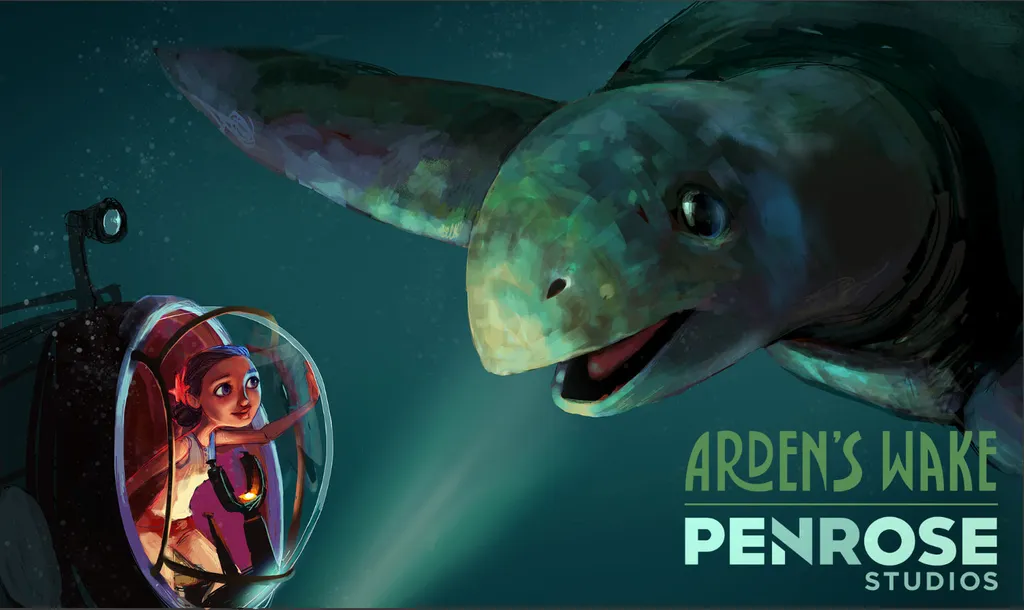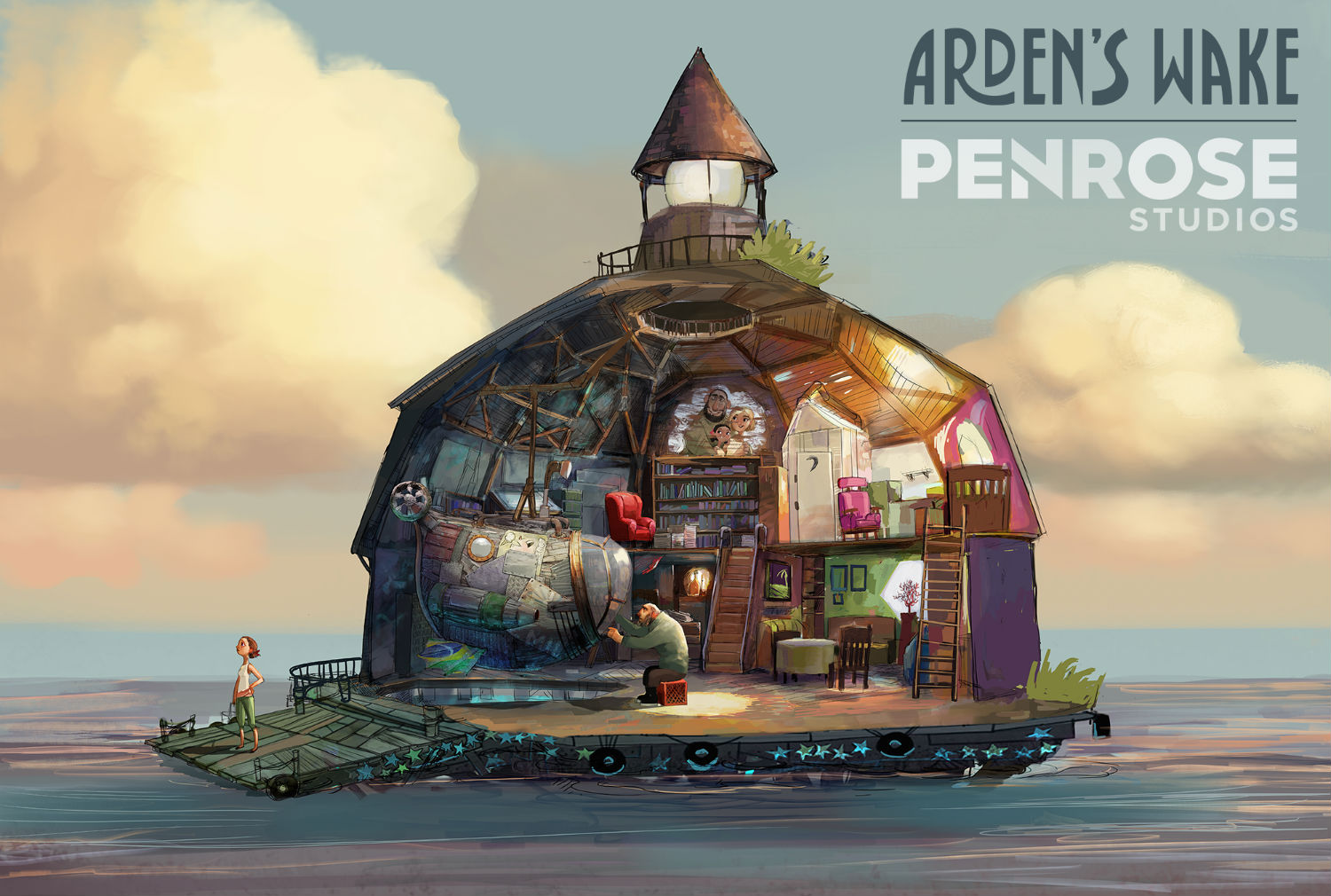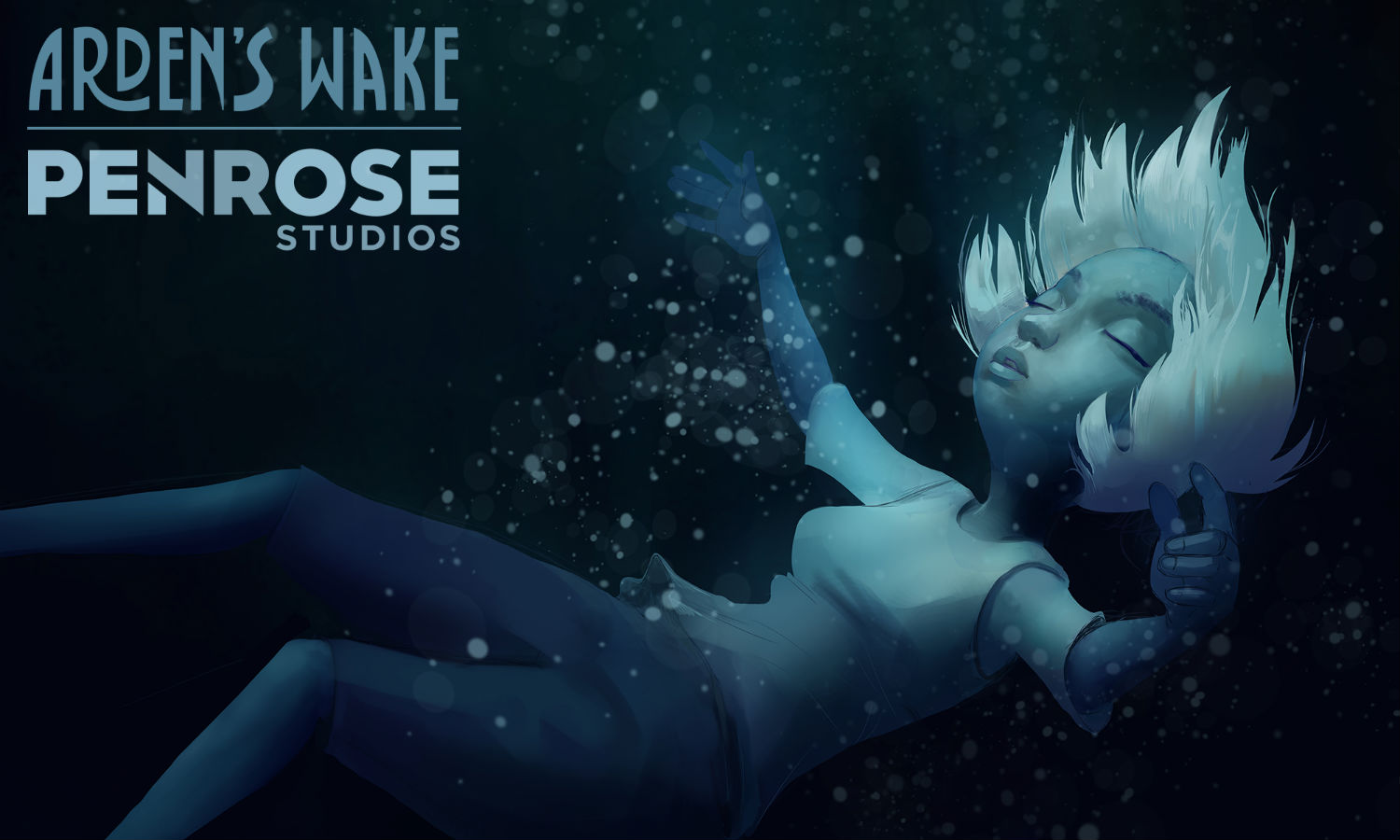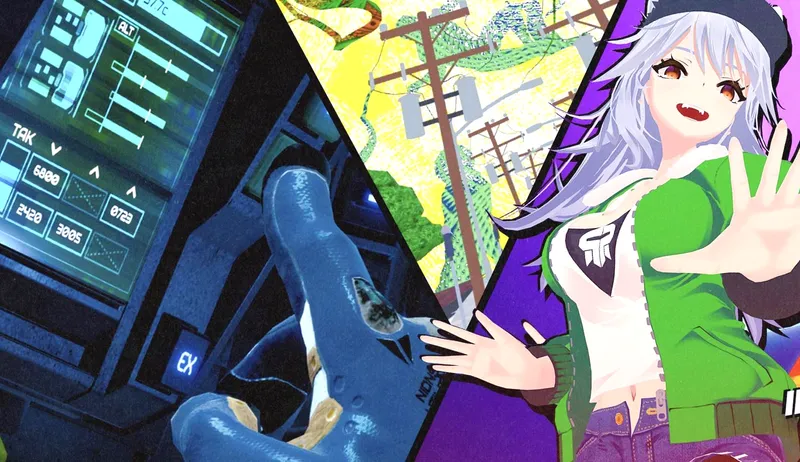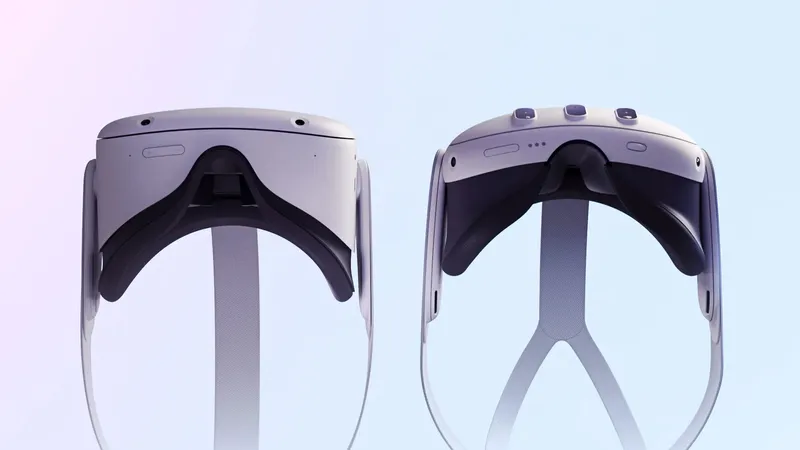You see the waves undulate in the background, then the details of the furniture in this home inside a makeshift lighthouse next catch your attention but your focus is soon dominated by the exchange between a father and his teenaged daughter. The technical complexity falls away and you are watching life at sea in this one cartoon world.
Arden’s Wake is the latest animated VR piece rom San Francisco-based Penrose Studios, the same team behind the early piece Rose and I, and then last year’s wonderful and ubiquitous Allumette. At the Tribeca Film Festival’s VR wing, Penrose is debuting Arden’s Wake: Prologue. And while Allumette had the notoriety of being the longest VR piece made, at 16 minutes, this first act of Arden’s Wake shows that Penrose is ready to go longer and further with VR storytelling.
“Our mission is to define the next generation of human storytelling. We have this vision that we can create the media technology company that transforms the way we view entertainment,” said Eugene Chung, director of Arden’s Wake and the founder of Penrose.
Though it is only the first part of a larger work, this Prologue has a three-act structure and the viewer goes through a rollercoaster of emotions. The visuals of Wake are also well made. It comes together to feel like a solid piece of immersive storytelling. And, like any great show, when it ends, it leaves you wanting more. Penrose has succeeded in creating another vibrant world to experience.
While the creative success of this latest VR short from Chung and his team is almost a given, it may be easy to overlook the technical decisions that aid in making such a VR story work. For Arden’s Wake, Penrose used the popular Unreal Engine as the backbone for their graphics, but had to add their own secret sauce. Like Allumette and its fluffy clouds, they had to work to get the water of Wake just right. Whether it’s the reflections and light refraction on the surface of the water, or the depths below it.
“There is nothing you can just plug in and get the effect we wanted for the underwater world. Light falls off. It loses the reds and blues. We had to work on the dithering issues, so we don’t get the smearing you have with standard systems.” said Jimmy Maidens, the lead scientist at Penrose.
Maidens previously worked at Dreamworks Animation. Working on special software and renderers, such as Hollywood does for CG films, is nothing new. But the software tools Penrose uses to make its VR shorts is different. Maidens explains:
Coming from film, it’s initially like, ‘We need you to make a sculpture; here’s a piece of paper to draw it out.’ Then they later give back a sculpture and it’s not what you wanted. So you get another piece of paper and draw it again. And again. But with tools like Maestro, you no longer are gathering around a screen, making comments, where only one person is in VR and trying to explain what they are seeing. Now we all just jump in there.
So rather than work in two dimensions, Penrose has created their own VR software tools. One piece of it is called Maestro. The 38 team members at the studio don’t discuss the daily changes going into the VR work at a conference table, looking at slides on a wall. The team enters the 3D space of Arden’s Wake together. They talk over changes made to a set or a character model. Simple avatars, enhanced by Oculus Touch, point at things as they discuss it. They draw with their hands, marking up the space around them. These 3D drawings within the scene can be exported to other tools in Penrose’s software suite, so artists and engineers can refer to it right where they work.
Watching a dozen creators collaborate from two coasts while virtually standing in the wooden lighthouse of Wake helps you get it. Why add a barrier to the process of making virtual art? This is a team that is collaborating and what better way to use the promise of social VR?
“We use a proprietary tool suite that we developed internally since the earliest days,” Chung said. “Maestro allows us to collaborate in VR together socially, to understand certains aspects: How big should something be? Where should we place stuff? This is a brand new medium and all these things are just things we have to try through trial and error.”

Penrose has had over 20 people using Maestro to go over virtual dailies. Chung does not see a theoretical limit to the software, as the studio’s engineers continuously improve it and add features, most of which I am not privy to, to help the company face the next creative challenge in making their latest VR short. And they are considering releasing a version of Maestro to the world, to help other animation teams create in VR. But no specific plans yet.
“There is something amazing about being able to power a world of creatives,” Chung said. “Just philosophically, there’s something really exciting about that. But for now, we are only showing some of the magic that went into Arden’s Wake.”
Chung has been working on VR storytelling from early on in this modern emergence of VR, first as a founding member of Oculus Story Studio, which took on the first immediate challenges of VR animation. Then he founded Penrose, and continued to work on these with shorts like Allumette. With the Arden’s Wake Prologue he is showing how far they have come, both as an artistic endeavor and with the technical know-how to help that vision happen. That struggle is what excites him most.
“My Dad’s an opera singer. I grew in Virginia and there were kids that didn’t watch opera. They watched TV and movies. These days, kids watch YouTube videos. Well, 150 years ago everyone loved opera. It was a major artform,” said Chung. “A few decades later and people with cameras came along started making moving pictures. They were the vanguard of this brand new medium. My entire life I’ve been searching for this and I thought I would never live to see another transformation.”
The next frontier in the struggle to figure out VR storytelling is interactivity. VR animation is already this hybrid of Hollywood film production and video game graphics. But what if you add in some of the manipulation and control you have in a video game? Oculus and Vive both have motion controls that let you “touch” the virtual world.
Chung is keen to play with such conceits and figure out what such interactivity could be in VR animation. He explains that in the beginning there was interactivity inside of Allumette, but then they pulled it out. And now with Arden’s Wake, they are exploring this notion again. Later acts of Arden’s Wake are coming later this year.
“VR is inherently interactive. During Arden’s Wake Prologue we haven’t given you hand controllers. There’s an intriguing possibility of how you do that. But it’s important to do that in an elegant way. We now have more game people working at our company and so now it’s an interesting marriage of game and film talent. So that means you have a seamless integration of interactivity and storytelling. What we don’t want to do is a ‘Choose Your Own Adventure’ type of thing. We will have different levels of interactivity. We will have something in the coming months,” said Chung.

